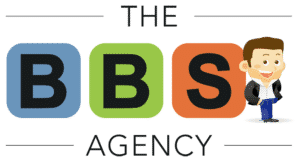Google’s New Email Protections & Your Website


By The BBS Agency
January 12, 2024
IMPORTANT
In a follow-up to a previous blog post, we wanted to reiterate how important it is to make sure your email is ready for this new change.
Important Email Compliance Changes Ahead for Gmail and Yahoo. Take action before February 1st, 2024, to safeguard your sender reputation and email deliverability. Here’s what you need to do to ensure your business thrives.

Photo courtesy of Flodesk
What’s Changing in Email Marketing?
Major email providers such as Gmail and Yahoo are implementing changes to improve the quality of email communication, reduce spam, and enhance user experiences. Here are the key updates:
-
Gmail’s Inactive Account Removal:
Starting from December 1st, Gmail has initiated the removal of inactive email accounts—those unused for over two years. This move aims to boost email deliverability and improve user satisfaction. Regularly maintaining and updating your subscriber lists is now crucial to maintain a healthy email list and sender reputation.
-
New Email Compliance Requirements for Bulk Senders:
Both Gmail and Yahoo have introduced new requirements for bulk email senders (those sending over 5,000 emails per day). These requirements include:
- Use of a custom domain.
- Email authentication through SPF, DKIM, or DMARC.
- Implementation of a one-click unsubscribe option.
- Maintaining spam complaint rates below 0.3%.
These changes transform established best practices into mandatory standards, impacting high-volume email senders.
Who Is Affected?
Gmail’s removal of inactive accounts can impact anyone’s sender reputation if their email lists are not regularly cleaned. However, Gmail and Yahoo’s new email compliance requirements only apply to individuals or businesses sending more than 5,000 emails per day.
What Should You Do?
To adapt to these changes, follow these steps:
- Regularly clean your email list at least once a year. Also, consider obtaining a custom domain and authenticating it using DKIM verification, regardless of your business size, to prevent your emails from being marked as spam. These practices align with standard email marketing best practices.
- If you send more than 5,000 emails per day (excluding transactional emails), take action before February 1, 2024. This applies to marketing messages, newsletters, updates, coupons, and invitations sent via email, regardless of your business size.
For high-volume senders:
- Obtain a domain-specific email provider. If your marketing emails’ ‘From:’ address is [email protected] or [email protected], change it to your own domain to avoid emails going to spam. Consider services like Google Workspace or Office 365, available through domain registrars.
- Authenticate your email by configuring SPF, DKIM, and DMARC. This verifies the sender’s identity and domain. For assistance with email authentication, contact your provider or The BBS Agency.
- Ensure one-click unsubscribe functionality in your emails to comply with Gmail’s requirements. Some email marketing platforms, like Flodesk, already implement this feature by default.
- Keep your spam complaint rates below 0.1% to avoid issues. Exceeding 0.3% can lead to your domain being blacklisted by Gmail. To achieve this, clean your email list regularly, segment subscribers, and share relevant, engaging content.
FAQs:
- Ignoring these changes may result in more emails going to spam, lower email engagement, and potential blacklisting by email providers.
- While SPF and DKIM setup is generally one-time, you should regularly monitor DMARC and clean your email list as best practices.
- For assistance with SPF and DMARC setup, contact [email protected].
